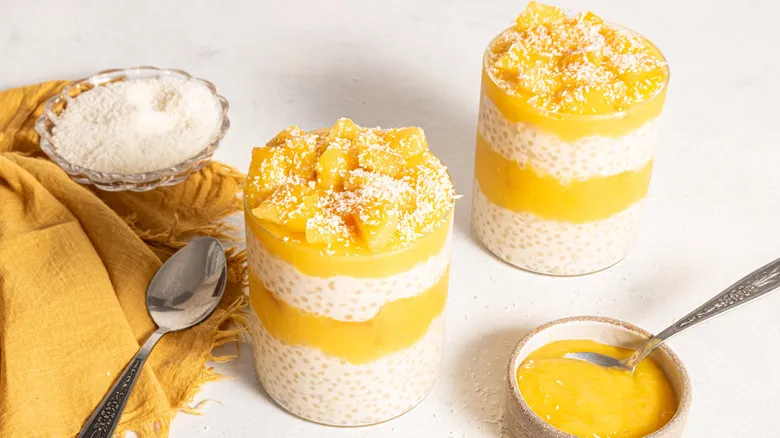Assemble the ingredients for the mango sago (mango coconut tapioca pudding)
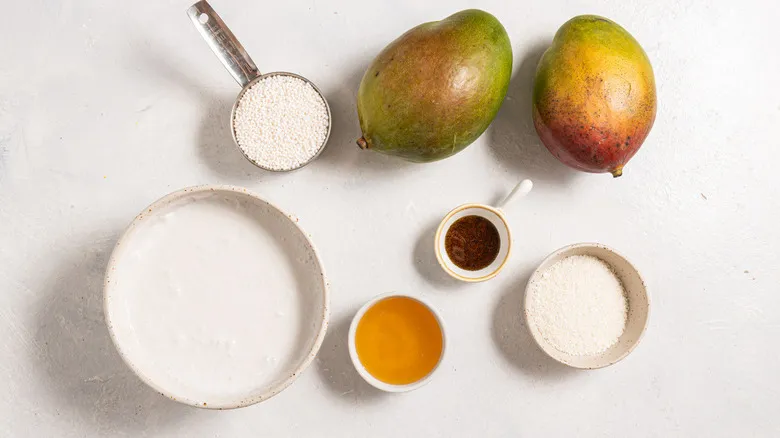
This pudding only needs a handful of ingredients: mangoes, coconut milk, honey, shredded coconut, vanilla paste, and tapioca pearls, which are derived from powdered tapioca starch.
A quick note about the vanilla paste: if you don’t have it on hand, you can use other forms of vanilla, such as extract, powder, or bean. For the first two options, you can substitute them in equal amounts, while ? of a vanilla bean can replace 1 teaspoon of paste. Manolova also mentions that you can replace the coconut milk in this pudding with another type of plant-based milk or even dairy milk, if preferred.
Step 1: Combine the coconut milk with sweetener and flavorings
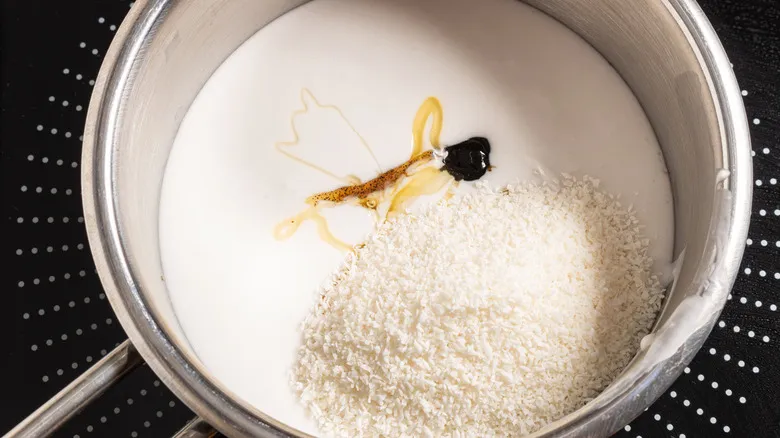
In a medium saucepan, mix together the coconut milk, honey, vanilla extract, and shredded coconut over medium heat.
Step 2: Cook and cool the coconut mixture
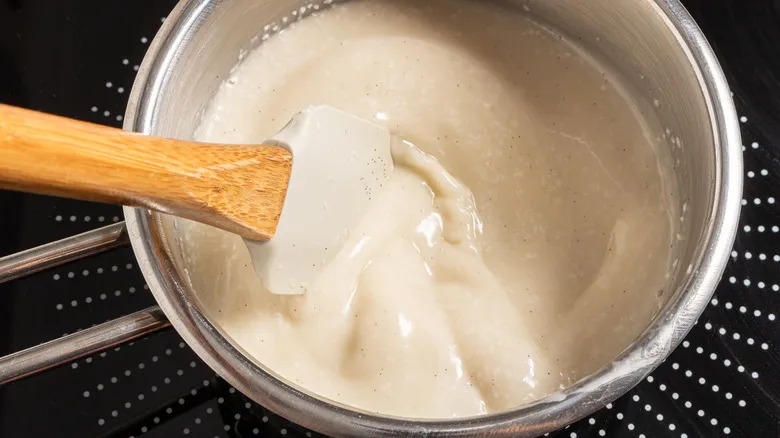
As you whisk, allow the mixture to reach a boil. Take it off the heat and let it cool down.
Step 3: Chop the mangoes
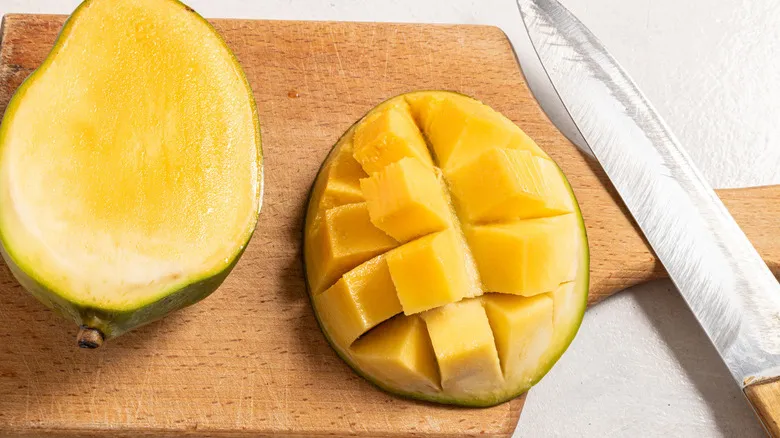
Dice the mangos into cubes.
Step 4: Puree part of the chopped mango

Place half of the mango in a food processor or blender and blend until smooth. Set aside the remaining half for later use.
Step 5: Boil some water
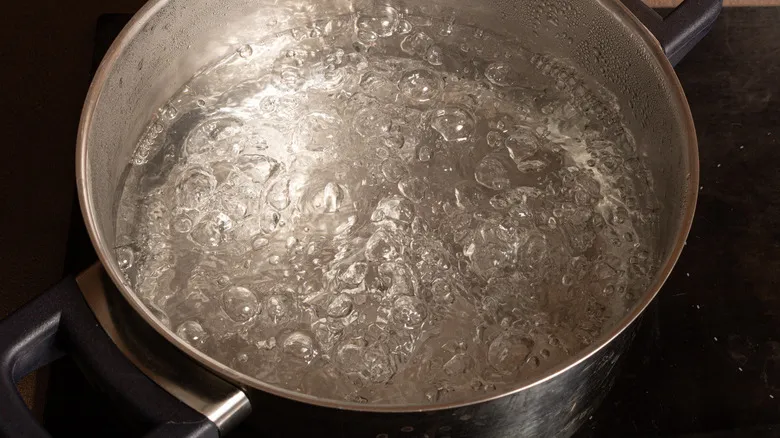
Heat a pot of water until it reaches a rolling boil.
Step 6: Cook the tapioca
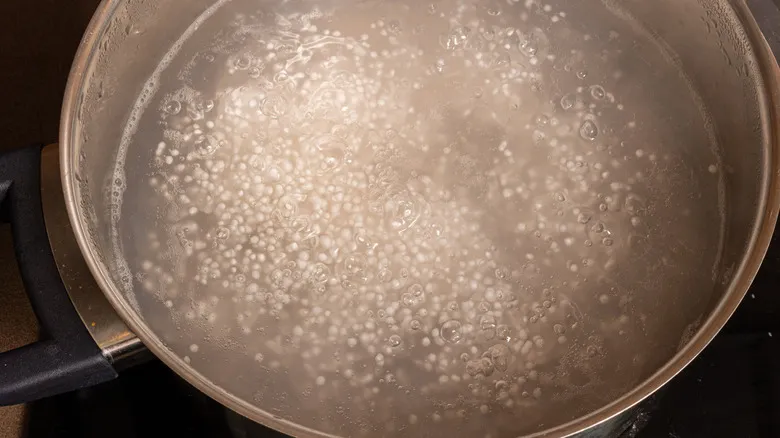
Introduce the tapioca pearls into the boiling water and simmer for approximately 10 minutes, or until the pearls are predominantly translucent with small white specks remaining in the center.
Step 7: Drain and rinse the tapioca
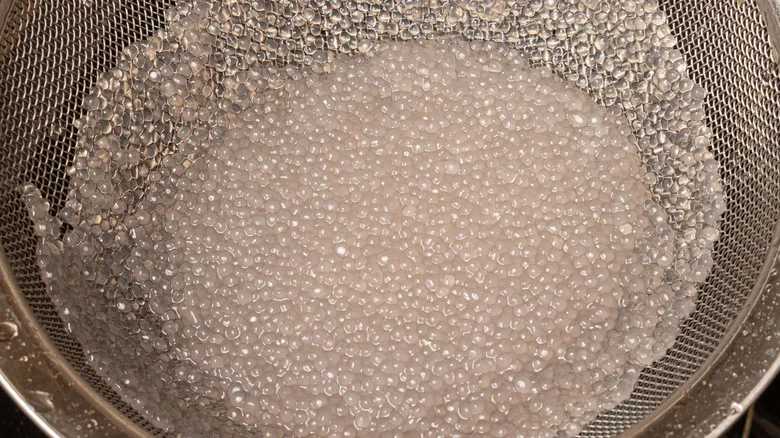
Strain the tapioca pearls using a sieve and rinse them under cold water to halt the cooking process and prevent them from clumping together.
Step 8: Mix the tapioca and coconut milk
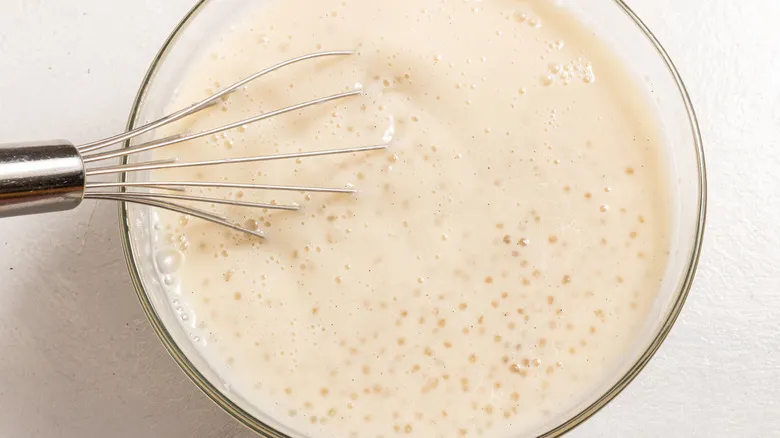
Incorporate the tapioca into the cooled coconut milk mixture and mix well.
Step 9: Chill the tapioca mixture
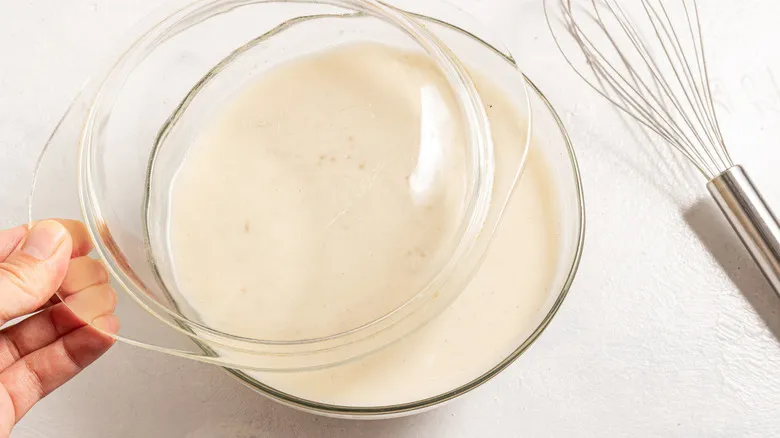
Seal it and place it in the refrigerator for a minimum of 2 hours or up to overnight to allow it to thicken. If you like a thinner texture, you can enjoy it 30 minutes to 1 hour after preparation.
Step 10: Assemble the mango sago
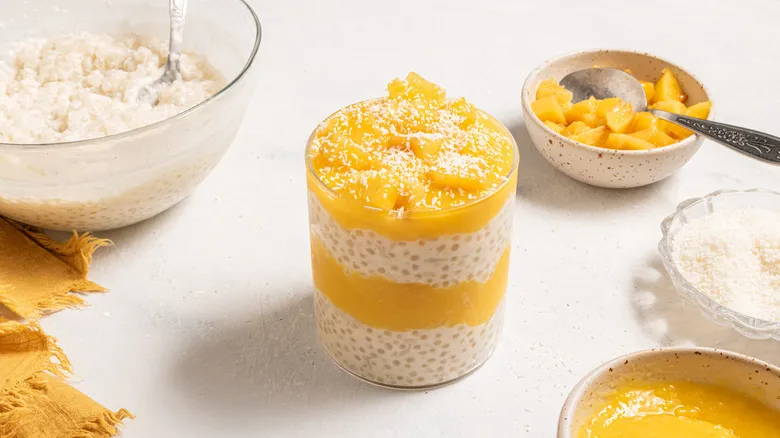
When you're prepared to savor the pudding, layer the tapioca, mango puree, and diced mango alternately in a glass, jar, or bowl.
What is the history of mango sago?

Mango sago pudding was first introduced in 1984 at a Hong Kong eatery named Lei Garden, which sought to enhance its menu with a new summer dessert. Initially, the pudding was referred to as "pomelo mango sago," as pomelos—citrus fruits resembling grapefruits—were used as a garnish (though Manolova prefers to use extra mango instead). Although the dessert was tasty, it struggled to gain popularity at first. With an abundance of sweet, fruity treats available in Hong Kong during the summer, it required a unique twist to attract attention.
The turning point came when the restaurant owners renamed it with a Cantonese phrase meaning "sweet dew of the willow branch." This change not only added a poetic touch but also connected the dessert to a tale about the Bodhisattva Guanyin. This compassionate Buddhist figure is said to have used dew from a willow branch to revive a magical ginseng tree that the mischievous Monkey King had destroyed. Because of this association, mango sago is considered auspicious, and the name change indeed brought good fortune to the dessert, which is now enjoyed in restaurants throughout Hong Kong and on the Chinese mainland.
What other flavors of sago can you make?

Although mango is the traditional flavor for this coconut milk sago pudding, Manolova points out that you can experiment with various fruits if you wish. She recommends using melons like honeydew, as well as strawberries or bananas. A large mango typically provides about 1 ½ cups of chopped fruit, so you'll need an equal amount of another fruit for the pudding.
For garnishing the dish, you can follow Manolova's lead and use the same fruit as in the pudding, or opt for a different one—such as strawberry sago topped with blueberries. If you can find pomelos, you might recreate the original "sweet dew of the willow branch," or you could use grapefruit, which is a readily available alternative. Manolova also mentions that "the soft and delicate texture of sago pairs well with some crunchy toppings for a delightful contrast," suggesting that chopped nuts or dried fruits could enhance the dish's texture—pistachios, in particular, complement mango beautifully.
Recommended

Fudgy Brownie Cake Pop Recipe
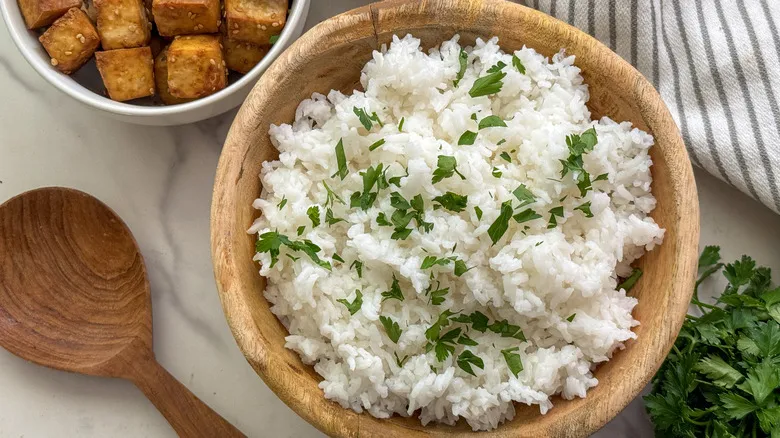
Basic Stovetop Steamed White Rice Recipe
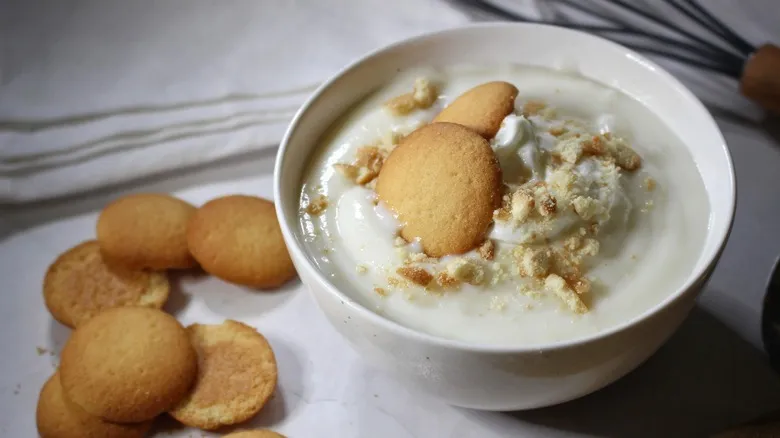
Easy Classic Vanilla Pudding Recipe
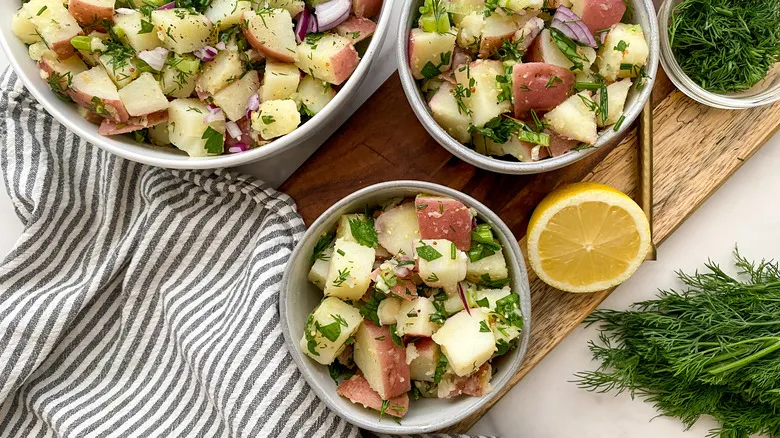
Herbed Potato Salad Recipe
Next up

